Abandoned Belarus Part One
- 02.09.2016
- 39265
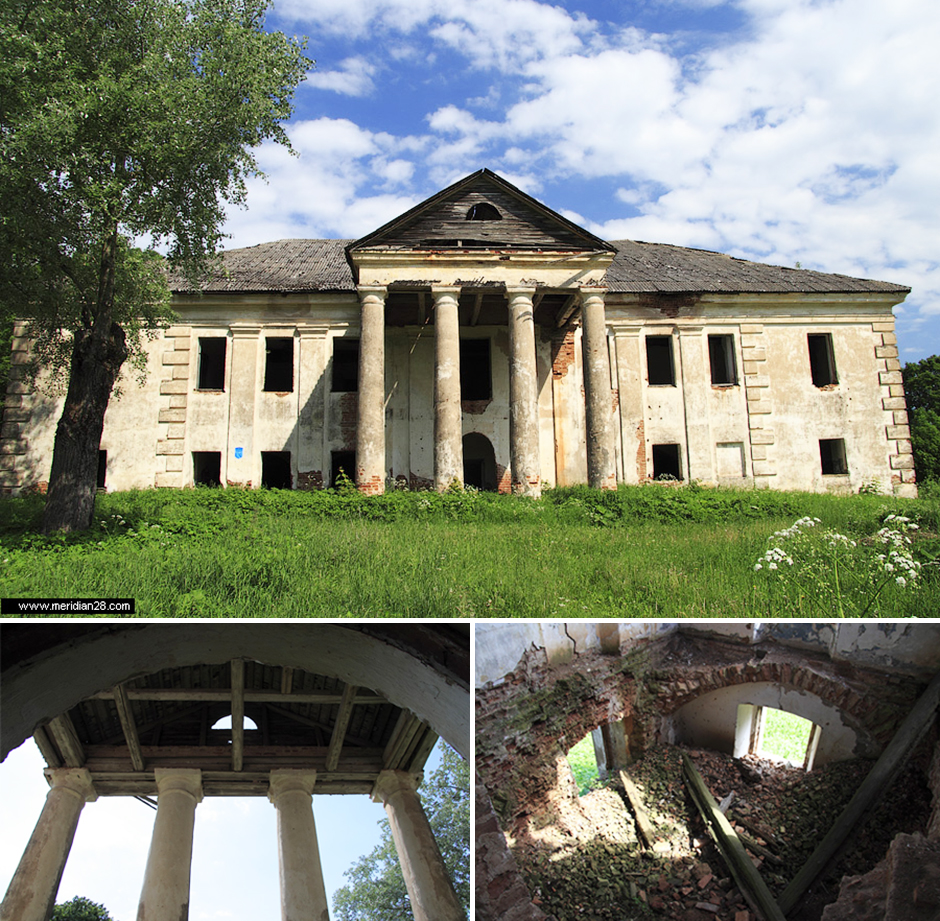
The Rudnitski Mansion
Dzedzina village, Miory district
Now abandoned mansion that used to belong to the noble family of Rudnitski was built in 1820 on request of the judge Aliaksandr Rudnitski. The plot of a thrilling blockbuster could be based on the story of the castle: Zigmunt Rudnitski became another owner of the mansion who soon drank away his inheritance and had to transfer it to the Vishnyavetskiya family to repay his debt. Right before the beginning of the Second World War Zigmunt's sister-in-law, Alyona Yablonskaya, bought the mansion out and gave it away to the University of Vinnitsa. During Nazi occupation Zigmunt returned to Dzedzina and was appointed village chief but soon after that he was shot by Nazis for his extremely kind and smooth character. After the war the mansion became the propriety of the "Leninski Shlyah" collective farm. Now there is no money for the restoration of the mansion so it has gone to the auction; but, to tell the truth, nobody wants to buy it.
Take a walk around what has remained of the park which was planted right in front of the building, try to imagine what the stairs to the second floor looked like when drunk Zigmunt was falling down from it, check out the remnants of the Soviet era, for instance, the stucco molding decorated with red stars. Be careful as no one's really taking care of the mansion – the stairs connecting the floors have collapsed so you never know if you're going or not to step on the firm floor in a room.
Read more here
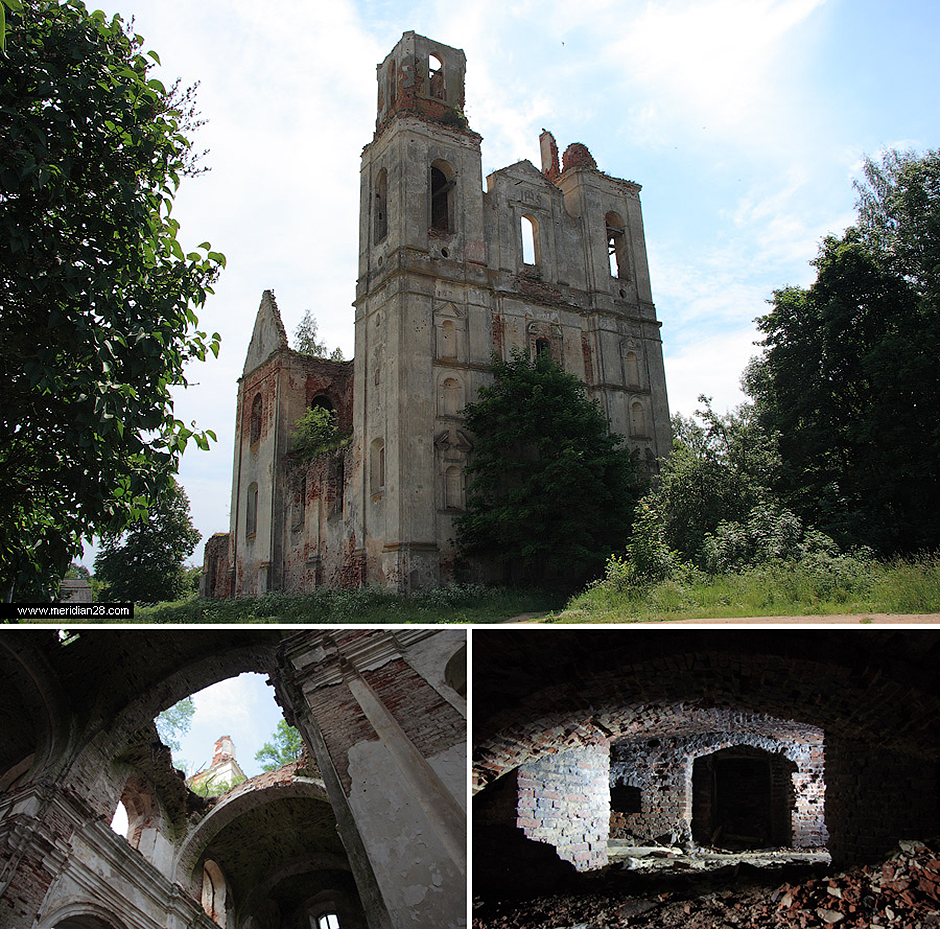
St. Veronica Catholic Church
Selishcha village, Ushachy district
It's very easy to find this place: this church is so tall that it can be seen from any neighboring village. It belongs to typical Late Baroque architecture: there are mighty walls, columns and five altars; but even abandoned and without a roof this catholic church looks impressive and mighty. It was built in 1726 within the Bernardine Monastery but during the Second World War it was almost destroyed as a result of bombings: the church was stripped of the tower and partly of the ceiling.
The remnants of the monastery are situated to the north of the catholic church. If you are not afraid to stain your white Converse shoes we advise you to check out the old well in the basement – the locals are sure that one can run into a ghost even during the daytime. You can get to the basement from the outside but it's easier to turn round the altar and then go down.
Read more here
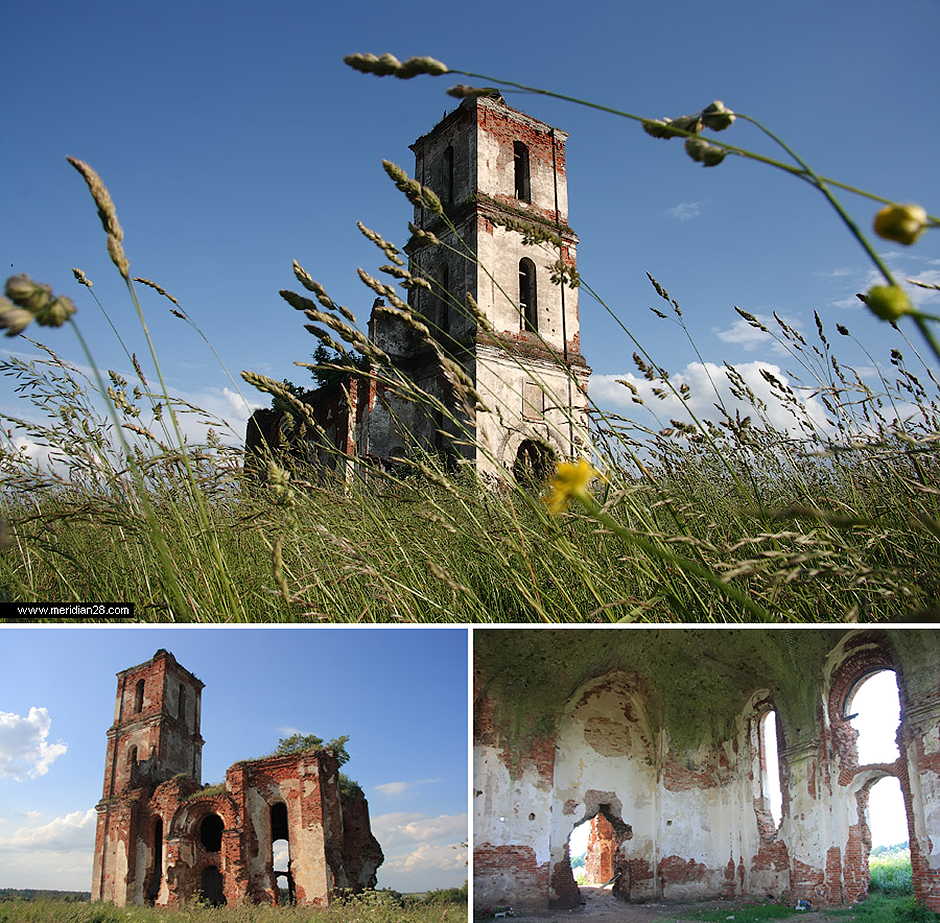
The White Church
White Church village, Chashniki district
The White Church (which is officially called Trinity Church) is seen from far away – it is situated on the hill by the lake. The place is really good – in the beginning of the 16th century the first brick on the building site was laid by a prominent figure in the Grand Duchy of Lithuania Bagdan Sapega. Actually, already in the following century the church was destroyed to be later rebuilt in Baroque style. By the way, there is a reason for pride: according to the scientist Raald Ramanau, that it's the only building in the world belonging to the Early Baroque style that was preserved in its original form.
The tower of the church was used for defense: this is proved not only by its height and strategic location, but also by the thickness of the walls (no less than two meters). But this didn't save the tower from destruction in 1939, but helped to function as a granary during the Soviet rule.
Earlier the tower was used by climbers as the area for training, and now it's a place where believers come: there's a new cross in the yard and inside paper icons hang on the walls. Don't forget to take your swimming suit with you to make the best out of the trip: lake Belaye is very clean and it attracts visitors with its pleasant green shore.
Read more here
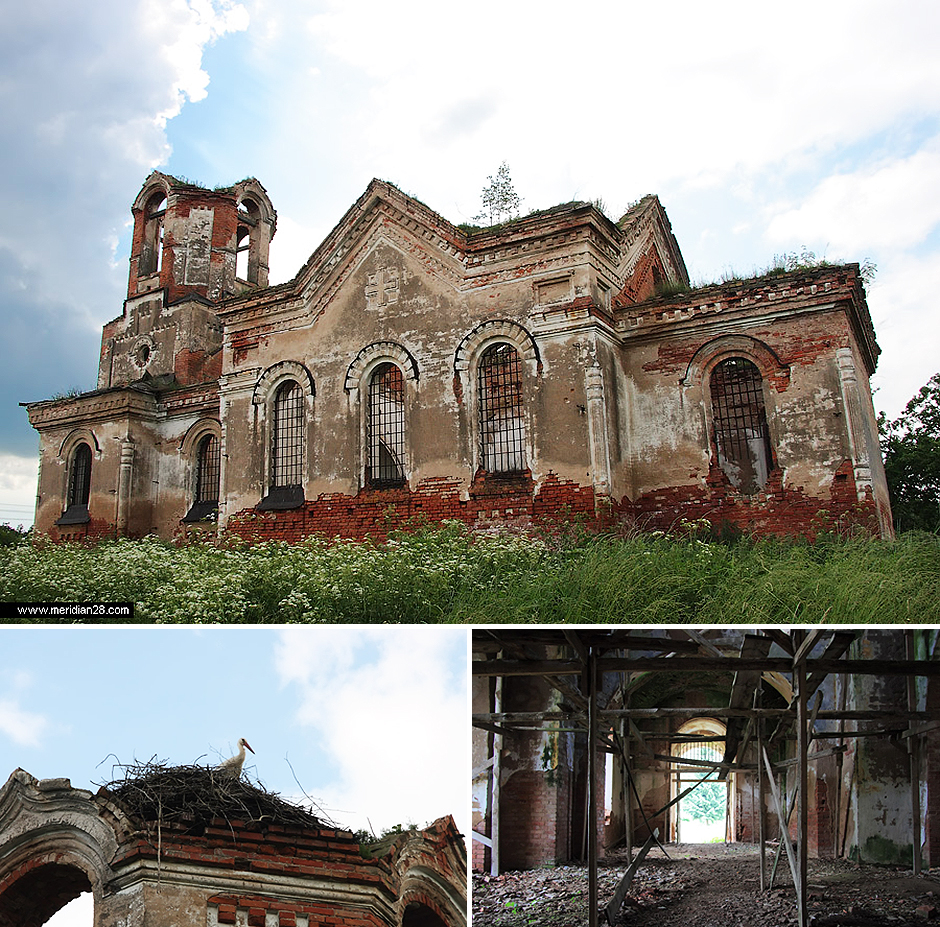
The Church in Svyacha village
Svyacha village, Beshankovichi district
A small red brick church resembles a candle in its form. This church is 120 years old. Besides its pleasant architecture, which can be seen if one opens up their imagination, this place is unbelievably clean. It can be noticed that these ruins are being taken care of: the grass is cut and there're no empty beer bottles on the floor. Lift your head up and you'll see the last inhabitants of Svyacha village – a couple of storks.
Read more here

The Slatvinski Mansion
Ravanichy village, Cherven district
One can dream about the gone times of nobleman in the Slatvinski family mansion which is an abandoned palace and park complex in Ravanichy village in Cherven region.
The Slatvinskis used to be the favorites of the Grand Duke of Lithuania and King of Poland Stefan Batory so since the 18th century they could afford to spend round sums on building their home. In 1799 the St. Anthony Catholic Church appeared on the territory of the estate; it was ambitiously planned to make a tomb out of it. At the turn of the 19th century the mansion was the object of envy for all the neighbors: the Slatvinskis had not only a big house, but also their own bakery, a brewery, a forge and even a cheese and dairy production facilities. In the second half of the 19th century Ludvig Slatvinski, the chief of Minsk province, started the construction of the palace whose remnants are the only thing that has been preserved in Ravanichy.
Now the mansion looks quite lonely and there's not much to do inside the building since almost everywhere the floor has collapsed. But if you manage to go through the park that has run wild you can find an amazing natural pond and a complicated system of artificial ponds which the Slatvinskis took enormous pride in. By the way, in the park of the mansion one can see the unique specimens of White Oak and Silver Maple and within a few minutes' walk from the complex there's the Slatvinskis' distillery which is still in operation.
Read more here

Trinity Catholic Church
Benitsa village, Smargon district
A mighty Catholic church built in Late Baroque style is situated on the central square of a small village Benitsa in Maladzechna region. Right here Mikhal Kleafas Aginski baptised his children. The church has a dramatic history: it was built in 1701 and then transferred to the Bernardines; for the following 150 years a school based at the church was working; in the middle of the 19 century it was decided to close this temple and 30 years later it was disassembled. Later this long-suffering Catholic temple was rebuilt into an Orthodox church, and in 1919 it was returned to Catholics. It is evident that during these operations the structure's appearance changed too, but in any case the church looks quite attractive; the tombstones and other decorations inside the temple were preserved.
You can climb up the shaky stares to the tower and sit in the attic – it's impossible to find a better place to admire the local landscape. The most exciting part of the trip is the basement – there one can see the tombs of the Shvykouskiya and the Katsyoly. These have been plundered recently so 200-year-old bones are scattered everywhere on the floor. If you haven't played enough in school with plastered skulls then you'll like Benitsa.
Read more here
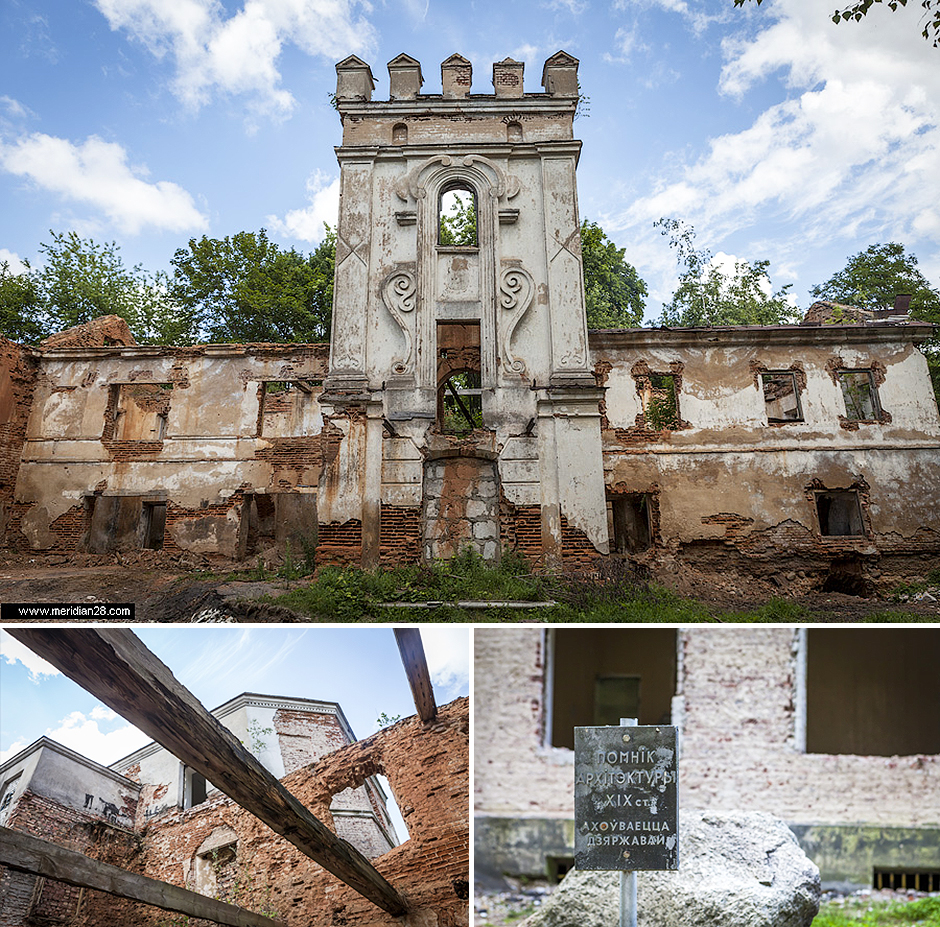
Manyushka Palace
Urban-type settlement Smilavichy, Cherven district
In the urban-type settlement Smilovichi on the territory of the Agricultural College you can really get crazy: around the corner of this third-floor building there's a park where you'll find a splendid palace built in Russian-Gothic style. The most notable part of the castle is the tower with merlons and a stylized facade – all this definitely doesn't look Belarusian-like. Besides, the palace was built by Stanislav Manyushka's grandfather. The construction began in the 19th century on the place where the old castle was situated. The composer's grandfather wasn't the owner of the castle and was fulfilling the duties of the tenant; but he managed to save money and bought the castle out from the owners.
Later the construction of the palace was continued by Aliaksandr Manyushka and by the next owner of the complex Lyavon Van'kovich. A new part which was looking like a mix of Gothic and Modern styles was joined to the old one; there were huge windows in the passage connecting two buildings, and the space itself was used as a greenhouse. Look at the passages between the rooms and imagine the balls and billiard games organized every week in the ballroom, and in the new part of the palace a great collection of paintings and ancient manuscripts was kept.
During the reconstruction of 1973, when the palace was prepared to become a college, the porch in Khrushchev-style was attached to the entrance. A couple of years ago glazed windows were installed so that the building looked rich. The building is being reconstructed inside too but one can easily get inside the palace.
Photo by Meridian’28
Translation by Alexandra
Read more:
Этому городу нужен злодей. Большой монолог Milky Jerry
О Beverly Pills и конфликтах с другими тусовками, о необходимом эпатаже и минских вечеринках.
Што такое буцік-фестываль?
Распавядаем пра чарговую slow-плынь, на гэты раз у фестывальным руху.
Маст сі: галоўнае пра «Месяц фатаграфіі ў Менску»
Дзеля чаго ўсім нам трэба ісці на, магчыма, найбольш значную менскую культурную падзею верасня?
On main page:
Maria Gulina: art management from eco-art to socially engaged practice
A journey from local environmental workshops to art management and working with socially engaged photography in an international gallery.
Emil Zenko: "It's satisfying to learn that someone bought your vinyl without having a record player"
The conversation about filming in a Belarusian village, the kitchen of ideas and the search for funds.
Timeline: How Belarus (Doesn’t) Fight Domestic Violence
A story about (or no) cooperation between government representatives, NGOs and ordinary people that care.
Why are gay people being detained in Azerbaijan?
Javid Nabiyev speaks on arrests of gay people in Azerbaijan, explains the «fucking solidarity» term and the point of activism.
White innocence: fighting racism in the Netherlands
Joris Hanse, Dutch activist from the Doorbraak, speaks about the Netherlands not matching the stereotypes.
In a wolf's skin
A philosophical audio story about a wolf, people who care for it and people who kill it.